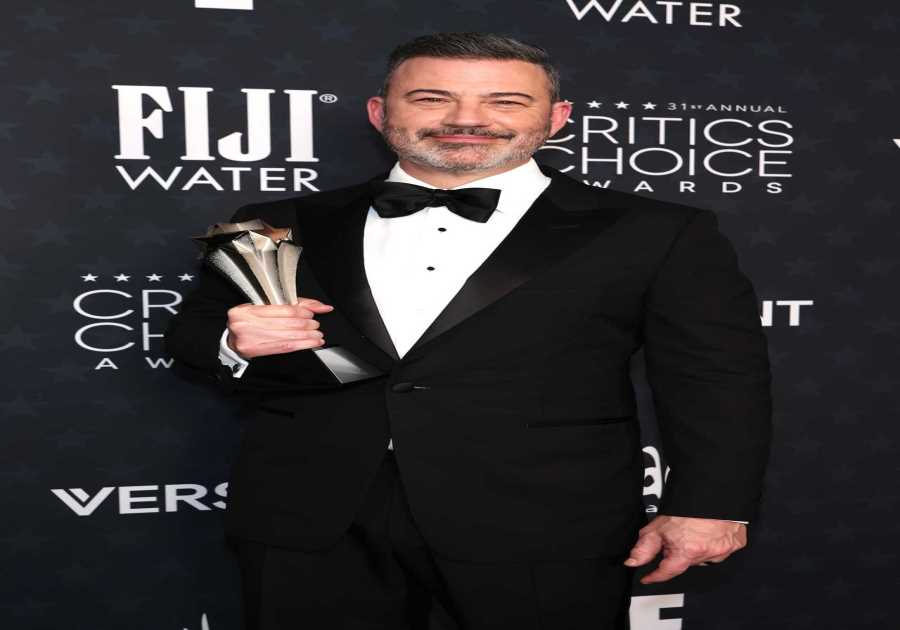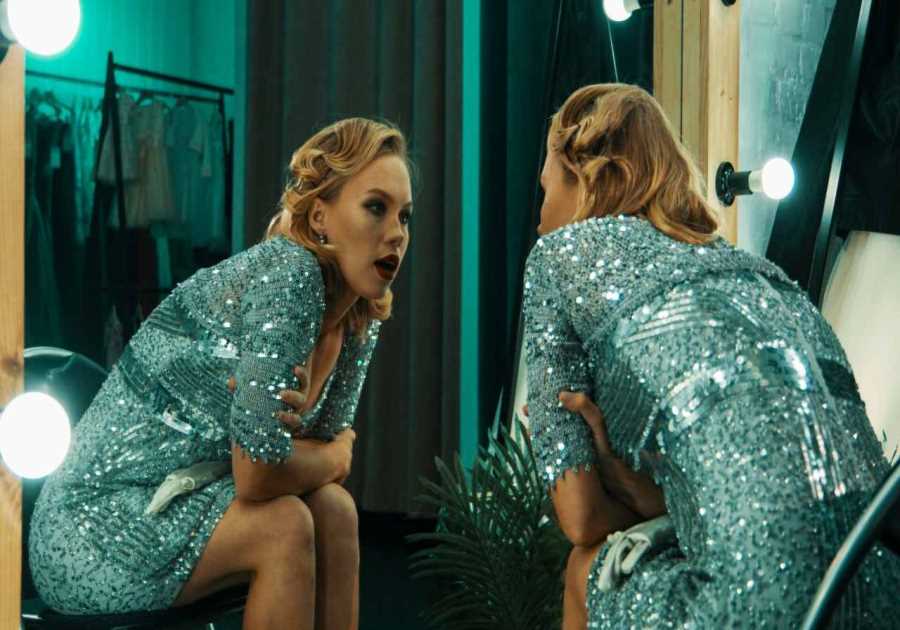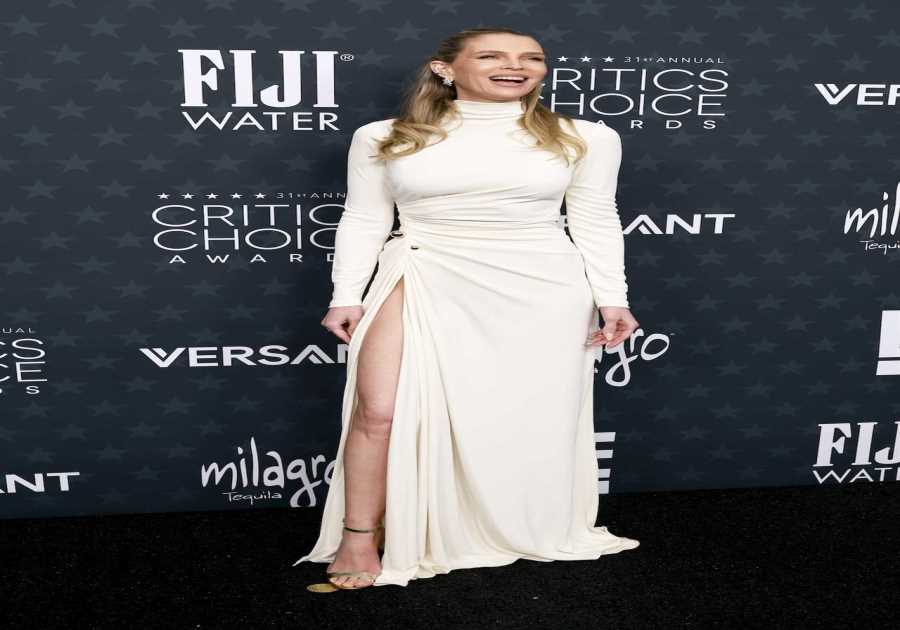No color is too vibrant for University of South Carolina forward Aliyah Boston’s hair. She has worn mint, royal blue, silver, orange and hot pink in her signature box braids.
When she isn’t showing the prowess in the paint that propelled her back into the conversation for national player of the year, she’s sitting in a salon chair while stylist Alana White sections Boston’s hair into squares — or boxes — all over her scalp and spends five hours braiding and incorporating dyed braiding hair into Boston’s own.
“I’ll just find new colors that I thought would be cool. Sometimes I get nervous. I’m like, ‘Well, what if it doesn’t look good? Then I’m definitely not going to be able to take it out because that is not like me. I gotta thug it out,’ ” Boston said with a laugh. “But all the colors honestly have impressed me, like, I love them all. [White] has my 100% trust. I have faith that she knows what she’s doing. She knows what color combo is going to work and even sometimes she likes to mix them herself.”

Jacob Kupferman/Getty Images
As Black female basketball players prepare for the NCAA tournament, many rely on protective styles – hairstyles that require low manipulation or natural hair such as sew-in weaves, braids and twists – to sustain them through March Madness competition.
Janae Mason, who is content creator for Nae2Curly, a social media campaign that chronicles Mason’s hair journey, has noticed Black female athletes are wearing protective styles more frequently.
“Athletes are automatically going to sweat, like, that’s just a given every single game, and that is where protective styles have your back because you’re able to get right to your scalp without having to do your whole head over,” Mason said. “It really does help because we’re not touching and manipulating our hair so often, and that’s what causes breakage when you’re touching your hair.”
For African Americans, protective styles, when maintained properly, provide benefits such as hair retention and easier maintenance.
“People think, you know, ‘Oh, I have protective style, now I get a break.’ It’s not a break. You just get a break from doing your hair so often,” Mason said. “But you still have to make sure that you’re taking care of your scalp and also still moisturizing those braids, and that’s the biggest key.
“It’s superimportant for us to have these breaks, like protective styles, but also making sure that we are going into the salon and actually having somebody that’s a professional checking it out.”
Boston describes her natural hair type as 4C, a thick and coily textured hair. Wearing her natural hair while going through the daily grind of lifting weights and participating in practice sessions meant continually washing and putting heat on her hair, which wasn’t conducive to maintaining its health.
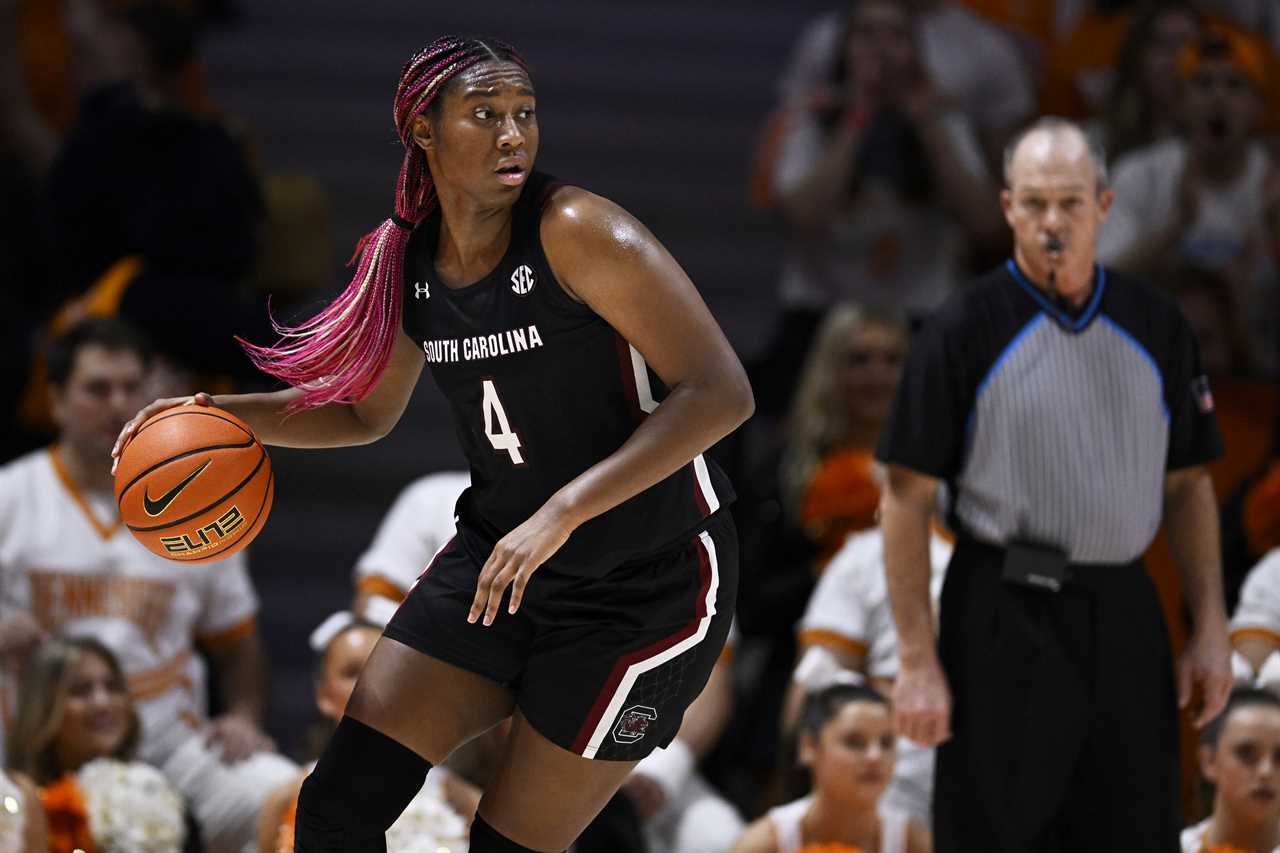
Eakin Howard / Getty Images
“I sweat in my hair a lot. I’ll come to practice [with] a nice Afro filled out and then, like, by the end of it, it’s done for. Then I’ll have to wash it and give it a good blow-dry,” Boston said. “My hair is 4C. I think it was just easier for me to just put it in some braids. I don’t really have to worry too much other than, obviously, oiling it, making sure it’s hydrated, and they were just convenient.”
Boston changes her hair every five weeks and oils her scalp nightly with Mielle Organics products. When the season is over, she spends most of the summer giving her hair a break from the box braids.
“It’s been hard to give [my hair] a break because of how much we’re on the move [during the season], honestly, but this summer, I gave it the longest break possible,” Boston said.
“I’ve seen a lot of growth with it every time I take them out, wash it, blow-dry it and put [the box braids] back in. I see a lot of growth and with the color sometimes you can’t really see how far it’s grown … it depends on how light [the color] is, and so I’ll be looking at [my hair] like, ‘Wow, that’s long.’”
Boston, who describes herself as a bubbly, bright and fearless person, believes her hair embodies her personality.

G Fiume / Getty Images
“Just to be confident in your skin, I feel like that’s what I want people to see. For me, I’m not afraid to wear color. I’m not afraid of what people might think about,” Boston said. “[People say] ‘Why she get that color?’ [or] ‘She needs to just go all black’ or wear this or that. I’m confident in my skin [and] my hair color, and that’s why I want girls, especially younger girls, to see and be able to embrace.”
University of Connecticut forward Aaliyah Edwards is very familiar with the looks a Black woman with colorful braids receives.
Edwards, an avid Los Angeles Lakers and Kobe Bryant fan, adorns her 4C hair with braids dyed in the Lakers’ bright yellow and purple team colors, her signature style since high school. Edwards has strong Jamaican roots, and braids have been her preferred hairstyle since childhood. She began by intertwining a few purple and gold braids in her hair before becoming confident enough to envelop her hair with the hues.
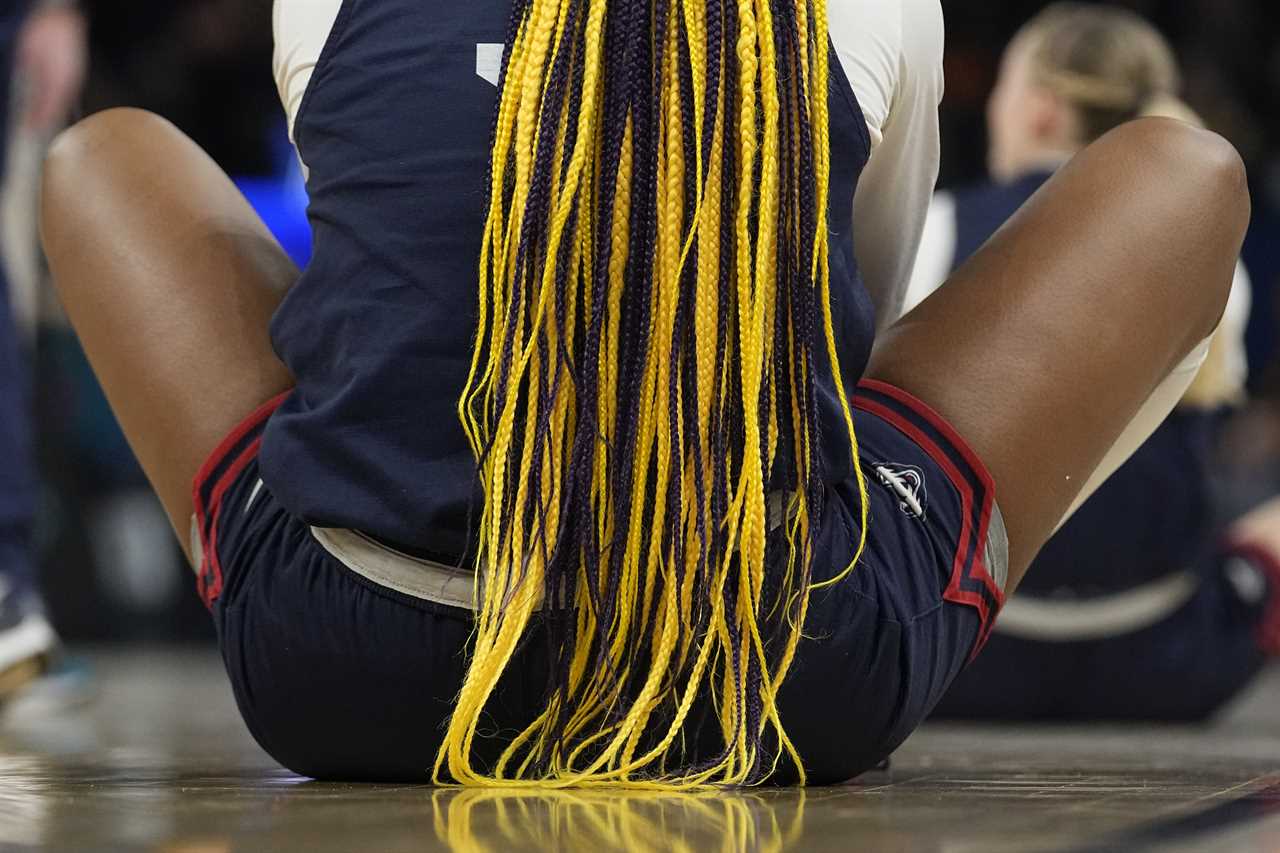
Eric Gay/AP Photo
“When I first started doing it, I would get a lot of stares because, you know, it’s like, oh, purple and yellow. Not many people would symbolize the color with basketball, and they’re just like, ‘Oh, that’s very bold. It’s very vibrant,’ ” Edwards said. “In my city, I didn’t really see a lot of people expressing themselves, necessarily experimenting with different color braids, so I was kind of like the first to do it and I was just happy to take that risk.”
She hasn’t found a consistent braider in Connecticut and primarily gets her hair done at home in Kingston, Ontario. Edwards’ signature colors aren’t easily found in beauty supply stores around Storrs, Connecticut, so her mother buys purple and yellow braiding hair in bulk and sends it to her so she has it available when she gets her braids redone every two to three months.
She wears her braids in either a ponytail or a half up, half down style, and at night Edwards uses Jamaican black castor oil to moisturize her roots. She also has used products from Cantu and SheaMoisture.
Braids require a lot less daily maintenance than her natural hair, and Edwards loves seeing her natural hair grow while wearing them.
“Each time I take it out, I see growth because it’s a protective hairstyle,” Edwards said. “Nothing’s really getting damaged, necessarily. … I’m happy with my natural hair right now. I think it’s pretty healthy and strong.”

Carmen Mandato/Getty Images
Her colorful hair contrasts with her navy blue and white UConn uniform, but Edwards is fine with that. She loves being able to express herself through her hair.
“I think that a lot of other athletes like myself utilize their hair to show representation of their identity and how they carried themselves. Not everyone’s putting color in their hair, but they use their hair [and] it shows who they are as a person and brings out creativity and artistic style,” she said.
“I get pictures all the time from little girls sending me pictures of purple and yellow on their hair [or] just do something crazy with their hair, and they tell me how they felt when they saw me play or how they see how I express myself in my hair. So it’s very heartwarming, because I’m making an impact without even realizing it.”
On the night before Stanford University guard Haley Jones gets her crochet braids installed, she washes, detangles and deep conditions her hair with a hair mask from the Uncle Funky’s Daughter collection. After another round of detangling, she blow-dries and sections her hair into individual twists to make it easier for her stylist at Jones’ 7:30 a.m. appointment.
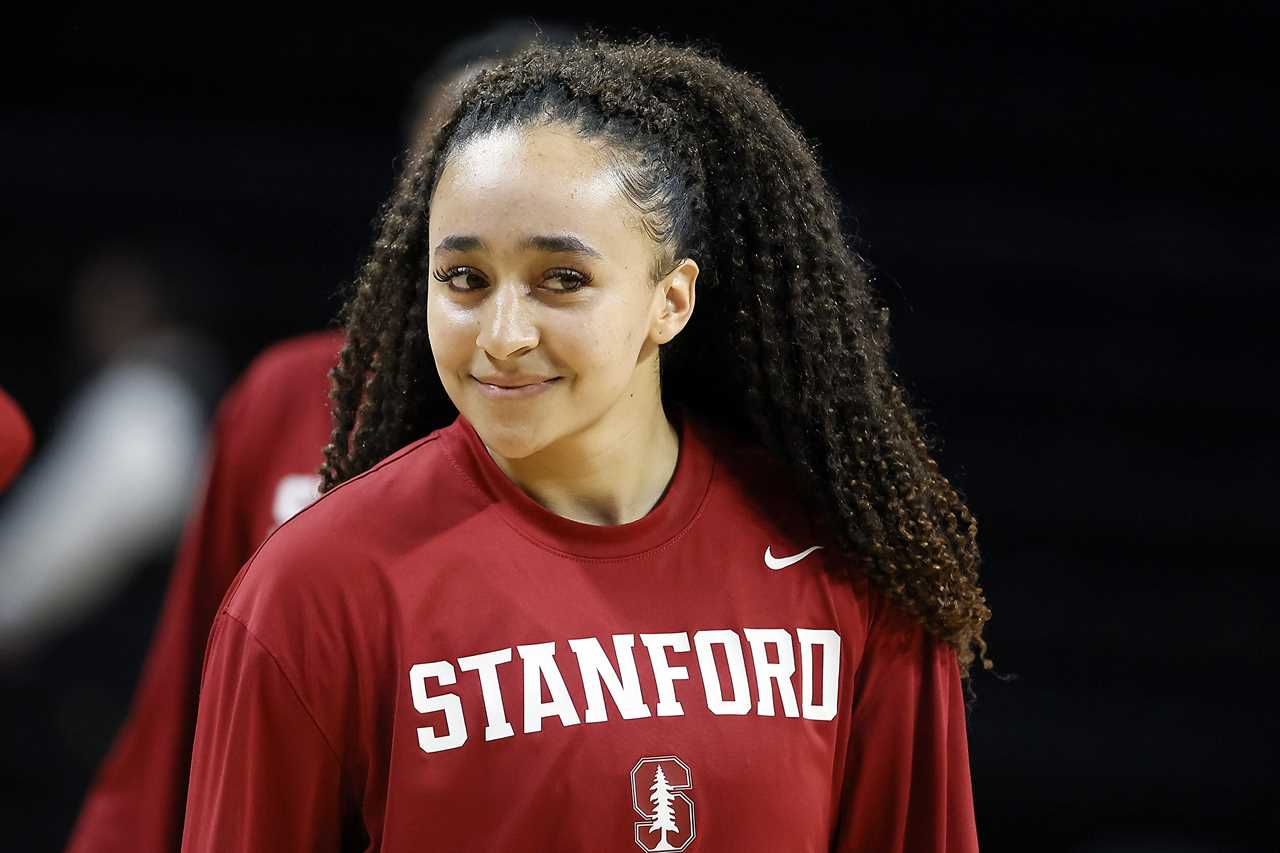
Soobum Im / Getty Images
Less than two hours later, Jones’ crochet braids — a protective style in which a hook or crochet tool is used to add extensions through her braided-down hair – are complete. She knows if she wore her natural hair daily the process to do it would take more than an hour.
“All I gotta do is to slick my edges and then I’m out the door,” Jones said about her daily routine while wearing crochet braids. “I don’t have to prep the night before and get the leave-in, the oil, the cream, the gel, and then you have to diffuse it, wait for it to dry. Then you could do the same steps that you did last week and, oh my gosh, your hair is completely different. So [protective styles] are very helpful when it comes to saving time.”
Jones, whose mother is Black and father is white, was raised in Santa Cruz, California, where African Americans make up less than 3% of the city’s total population. Jones spent most of her childhood fielding questions from classmates such as “Can I touch your hair?” and “Do you braid your hair every single day?” When she took out her braids, they would ask, “How did your hair grow so fast?” or “Why did you chop off all your hair?”
After trying various protective styles ranging from cornrows to twists to sew-ins, Jones ultimately found her perfect fit with crochet braids.
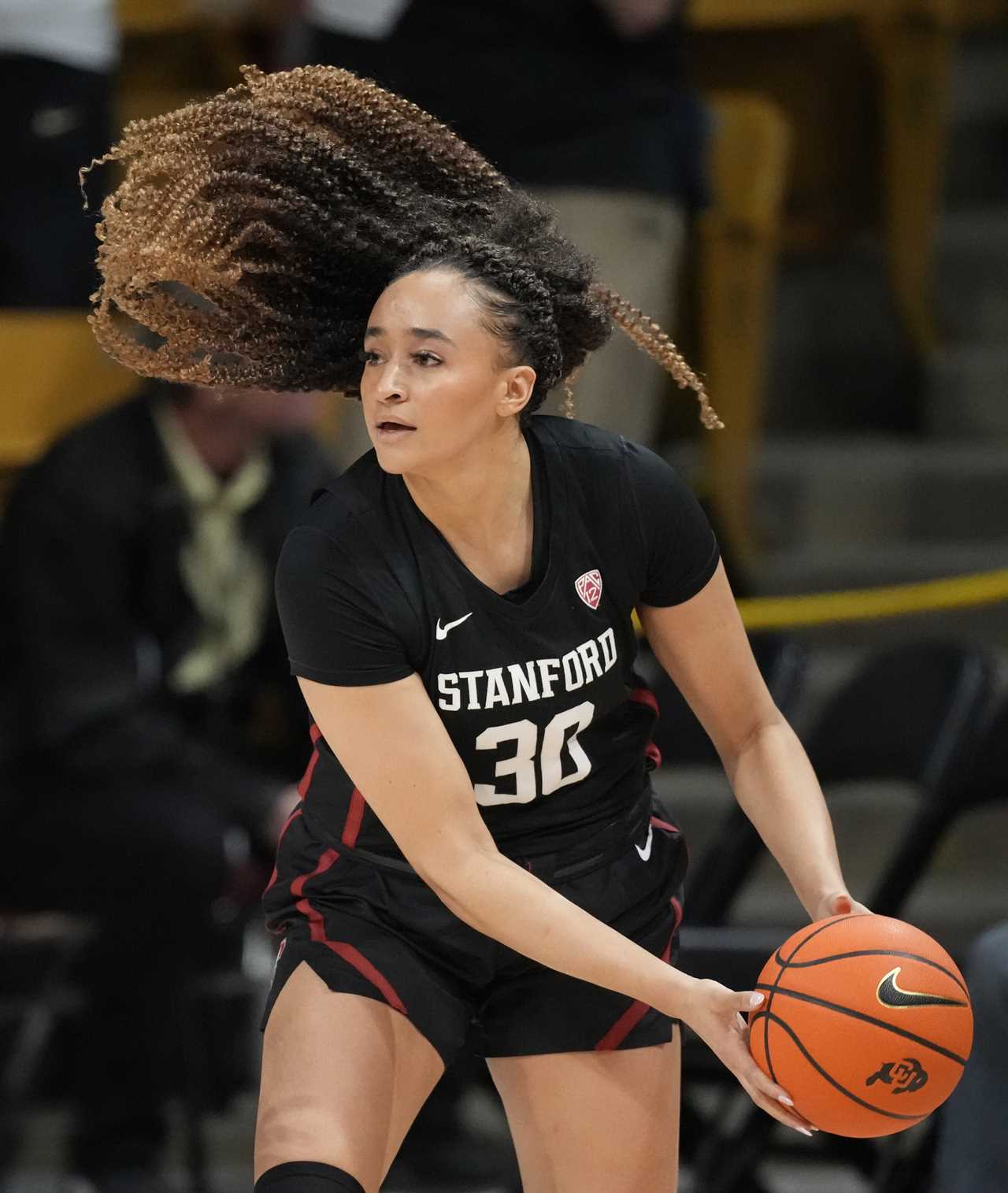
David Zalubowski/AP Photo
“So during COVID when we were home, I experimented with different hairstyles. For the season, I liked the idea of trying twists, but individual twists weren’t really the way, so I decided to crochet,” Jones said. “I did it, fell in love with it [and] never looked back. That year, we won [a national championship], so I was like, ‘This is it.’ ”
Jones describes her hair type as 3C, a hair type that ranges between thick, curly and coily hair. She said learning to love her hair and find products that work for it has been a lifelong process.
“I have, like, 3C pretty coily hair, which people find to be so interesting since I am mixed. When people see my hair it’s thick and long but very coily. It’s low-porosity,” Jones said. “So, learning how to deal with all that has been a roller coaster because I didn’t even know porosity was a thing until, like, a year ago. And I’m like, ‘Oh, that’s why these products don’t work,’ so it’s been a learning curve, but I enjoy the process more than I did when I was younger.”
The Cardinal senior signed a name, image, and likeness partnership with Uncle Funky’s Daughter in December after discovering the products helped her with her natural hair and learning the collection had products such as a refresher spray to help her with her crochet braids.
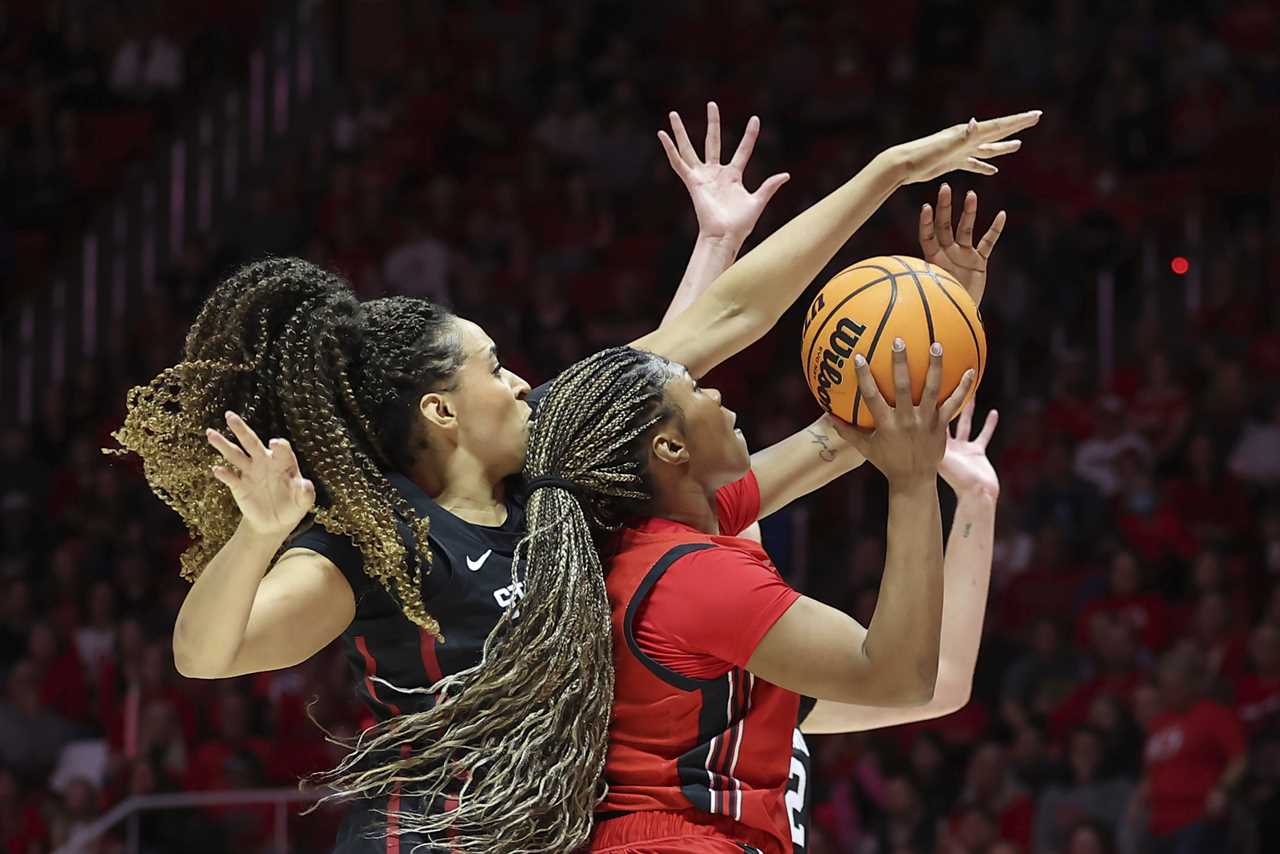
Rob Gray/AP Photo
“I’ve had my own curly, like, natural hair struggles, and I think it’s a shared experience for a lot of just upcoming young Black women, just for people with curly hair in general, where it’s, like, learning to love your hair and what to do with it, and people thinking different hairstyles mean different things about you,” she said. “I feel like crochet braids may represent me in the way the curls and, like, the bounce that it has is like my natural hair. … It’s my crown.”
University of Maryland guard Diamond Miller first started wearing braids at the suggestion of her mother and immediately fell in love with them as a protective style for her natural hair.
“Braids have been my favorite so far. I did like the closure sew-in because it feels like real hair and it’s better. But with the sew-in I don’t have a perm or anything. My hair is like 100% 4C natural,” Miller said. “So I’m playing basketball, [my hair] constantly gets sweated out and even with the closure, the glue on the front will just start lifting within, like, two weeks.”
Braids also offered Miller an opportunity for a new beginning after her natural hair was damaged by heat.
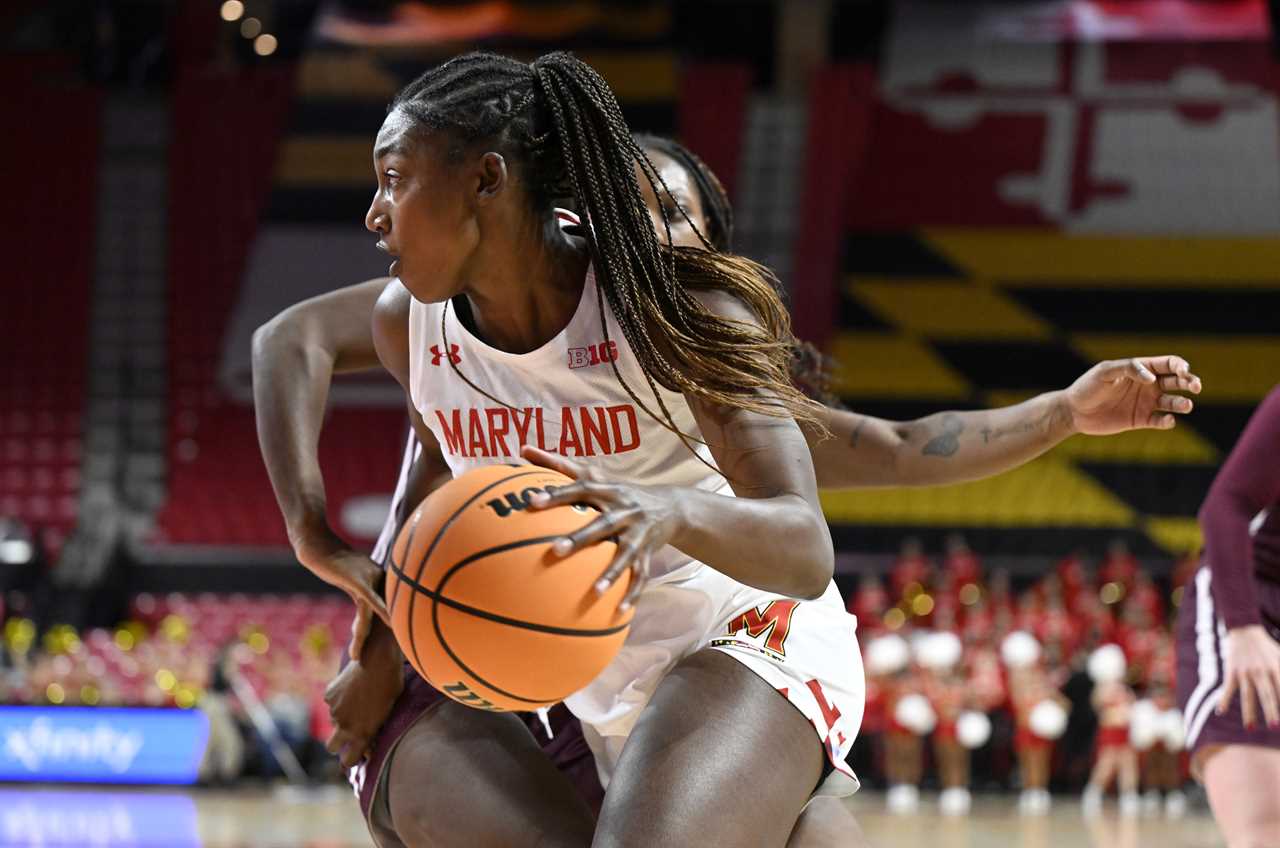
G Fiume/Getty Images
“My hair was damaged, completely fried, and I was like, OK, I have to start over,” Miller said. “My sister was like, ‘You need to cut it slowly, but surely it will grow.’ That’s what I’ve been doing and recently my hair has been growing really good, and I just have been taking care of it, too.”
While braids have helped Miller restore the health of her hair, she’s still adjusting to the changes in it.
“[Wearing my natural hair] is insecurity on my part. I understand that I’m just not ready to go natural 24/7,” Miller said. “I think society has something to do with that and just my own insecurities, I guess, about my natural hair and maintenance toward it. But right now, I don’t have the confidence to go with my natural hair out.”

G Fiume/ Getty Images
Miller refrains from putting heat on her hair now aside from blow-drying and straightening her hair for quick trims. Mielle Organics products are her favorites. She uses the brand’s shampoos, conditioners, leave-in conditioners, deep conditioning masks and oils. To maintain her braids she wears a bonnet every night and oils her scalp every day.
“I always feel like when I take out my braids, I’m like, oh, my God, it is growing. It’s just so hard to see results with 4C hair sometimes because it’s so curly. You just never know,” Miller said. “This is like a love-hate relationship, I can say, but I do love my hair and I admire it when I take it out. I’m like, ‘OK, I like this length, but I’m still getting those braids in.’”
Black women are known for wearing various hairstyles in professional spaces, and Black female basketball players doing so on the court is simply following the trend.
“[Black women] can do so many things. We are already great as individuals, but we are able to mix up our hair no matter what. And a lot of people look at us like, ‘You didn’t look like that yesterday.’ I’m like, I know, that’s the point. The best thing about being Black is having hair versatility. It is definitely a superpower of ours.”
— Janae Mason, content creator for Nae2Curly
Seeing female athletes with various hairstyles wasn’t commonplace for Boston, Edwards, Jones or Miller while growing up.
“Today’s world, it’s kind of shifted from back in the day where people were kind of hesitant and fit the model of just playing [with] a slicked-back ponytail,” Edwards said. “Now a lot of people I see, especially in college, you see people with dreads, short hair, curly hair, braids, cornrows, a different hairstyle that you’re seeing in the game of basketball that you didn’t see necessarily when I was younger.”
Jones credits female basketball players such as Boston, Edwards and LSU’s Angel Reese for wearing different hairstyles and various types of braids.
“We can switch it up, and it just creates representation for the next generation that we didn’t really have,” Jones said. “So I feel like at the beginning, I didn’t really realize what that meant until after the game girls will be like, ‘Oh, my gosh, I showed my hairstylist your hair.’
“I never realized how much it impacted me. So it’s been really special to kind of be that role model. I think it is for all of us to be those role models that we wish that we had, the representation we wish we had.”
-----------------------
By: Mia Berry
Title: Protective styles preserve Black players’ hair at NCAA tournament Braids, other styles allow for easier maintenance during March Madness
Sourced From: andscape.com/features/protective-styles-preserve-black-players-hair-at-ncaa-tournament/
Published Date: Thu, 16 Mar 2023 12:41:16 +0000
Did you miss our previous article...
https://ballerawards.news/sports/gianni-infantino-is-reelected-unopposed-as-fifa-president


